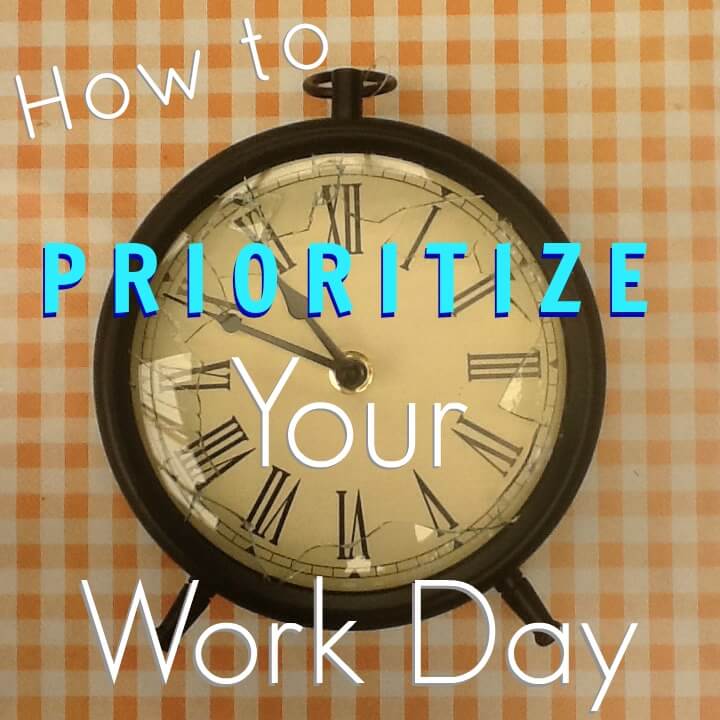Let me start off with a question: What did you get done yesterday? Was it important?
A few of you might have a list of excuses; some of you may be scratching your heads. A good number of you might be working really hard, but you’re putting out too many fires during the day to even think about what you should be doing.
We get it. We fall victim to the overly full schedule, too. Sometimes, client communication and meetings get in the middle of our actual work and we find ourselves saying (usually in a Skype conference), “We have got to get ourselves together!”
But there’s a way to keep yourself from getting bogged down with all those trivial tasks that keep you from your more important work. Using time logs, Asana (our favorite!), and a few other tricks, you can learn how to prioritize your work day and get more done.
Identify the Problem
Like any mechanic, you have to troubleshoot before you can fix anything.
If you happen to know exactly what’s preventing you from being productive, great! But maybe you just have a general sense that something’s not “working” in your work day. You’re exhausted from spinning your wheels, but you can’t really point to anything at the end of the day and say “That’s what I did with my time!”
Using a time log like this one can help identify how you’re spending your time. (Don’t worry, you only have to do this for a day or two.) The concept is simple: you simply stop every half-hour (set an alarm on your phone or computer) and log your activity for that block of time. At the end of the day, you assign a priority level to each task.
The idea is to find out how much of your day was spent doing unimportant or non-urgent tasks so you can refocus your energy to more pressing concerns. You might find that simply writing down your activities makes you more focused (much like the simple act of keeping a food log makes you more likely to choose healthier foods). But how do you choose whether “updating company website” is more or less important than “plan marketing event”?
Evaluate Your Priorities
When you’re in the middle of a maelstrom of tasks to complete, everything seems urgent. That’s why it’s important to evaluate your priorities beforehand. Here at Clarity, we think work flows best when your priorities work in this order:
1. Your Business
Believe us, we’re not saying “put yourself first” because we want you to be selfish. Exactly the opposite: taking care of the foundation of your business will keep your customers happy (and coming back). So make sure you write a strong business plan, get a functioning website, and get your storefront up and running, BEFORE you open your doors and expect to make money.
And as your business grows, don’t neglect necessary updates and procedural changes because you’re “too busy” helping clients. No business works with a “set it and forget it” mentality. Maintaining and improving your service or product is the best way to a strong business.
2. Current Customers
Always, always, always focus on current clients before you try to attract new ones! It is so hard to get someone to walk through the door or pick up the phone, let alone become loyal to you. It’s also so easy for them to leave if you drop the ball. Think of your current, loyal customers and clients as people you’ve made promises to. Because that’s what all of your marketing is, isn’t it? A promise to deliver a certain product, service, or emotion. Don’t go back on your word.
Besides, their word-of-mouth is your best advertising. If you dropped the ball as soon as you thought you had them “hooked,” they’ll let everyone know.
3. New Business
Looking for new business takes the most time and effort, which is why you should focus on it last. You can easily spend your entire day plotting out marketing strategies, developing ad campaigns, and working on a social media contest…and have no time leftover for anything else.
In our experience, word-of-mouth seems to be the best form of advertising, anyway. You can either throw money at an advertising budget, or use that money to refuel your business. The customers who love you will spread the word for you.
Take Things Off Your Plate
So you’ve prioritized your schedule and identified the tasks that are throwing you for a loop. But what happens if you still have too much on your plate?
Chances are, you have plenty of tasks on your to-do list that can be delegated to other members of your staff or even a third party professional. Some of these tasks are urgent and important, but that doesn’t mean you have to do all the heavy lifting.
Entrepreneurial blogger/podcaster Chris Ducker has developed the 3 Lists to Freedom to help you determine which things you should be putting on someone else’s plate. To come up with your own Lists, separate your own To-do list into these three categories:
- Things You Don’t Like To Do
- Things You Can’t Do
- Things You Shouldn’t Be Doing
For instance, if you hate planning the schedule for your staff, assign that task to a manager. Can’t seem to get the hang of building your own website? That’s something you should hire out to someone who knows what they’re doing. (Raises hand.)
All those other tasks that you keep doing—like landscaping your storefront—may be things you are able to do or don’t mind doing, but would free up a lot of time if you could pawn them off on someone else. These are things you shouldn’t be doing. We’ve spoken before on the dangers of “DIY”-ing your whole business. Don’t let time get away from you because you’re too stubborn or nit-picky to let someone else take the reins.
Create a Routine
At this point, you should have a pretty good idea of what you need to do. Now, you need to figure out how to execute it. It’s time to set your routine.
Wait, hey, put down the pitchforks! I’m not talking about a military schedule or anything. In fact, I think routines work best when they’re not super strict, but rather a basic framework from which to plan out your days.
Everyone’s routine will be different and there’s no “perfect formula” that works for everyone. But these are some tips that should help you.
- Start every day strong. You might want to start with your most hated task first, to get it out of the way. Or you like to check your email first, so you get caught up on office news before you start any projects. Whatever it is, make sure you’re setting yourself up for success from the first minute of the day.
- Schedule “free time” to plan for projects that take longer than expected or things that pop up unexpectedly during the day. It can be tempting to be “super productive” and schedule out every free hour of your time. But you know who else does that? Doctors. And by the time you show up for your 4:30 appointment, how long is your wait? All those extra minutes during the day add up, so plan for the overflow and don’t stretch yourself too thin.
- Prioritize your work day schedule. Pay attention to the times you are most productive, and use those times for your “high priority” work. If you know you’re so not a morning person, do all of your most important work in the afternoon, when your brain is firing on all cylinders.
- Remember that your time is valuable. If a client wants to meet up for lunch to ask your opinion on something—but you already set that time aside for something else—suggest another time or offer to shoot them an email later in the day. Rearranging your schedule to accommodate unimportant, non-urgent things only makes you more frustrated and less productive (your business comes first, remember?). You’re a busy person; your clients will understand.
- Don’t forget to schedule the “little things.” The definition of “little thing” varies from person to person, but basically, these are the things that you often forget to do during the day because you don’t think they are important enough to write down. But just to be clear, if it’s important enough to do, it’s important enough to write down. I was always forgetting to check our company’s Facebook and Pinterest pages (which I run) and my RSS reader (which I use to keep updated on the latest business news). Making time in my schedule ensures that I don’t forget to do them.
- Give yourself some flexibility. There will always be days when you have to schedule a business meeting during a time you usually set aside for doing your most important work. (There will also be those days when you just feel like escaping to Disney for a half-day instead of answering the phone.) Give yourself permission to switch up your routine due to special circumstances or even boredom. And if your routine stops working for you, switch it up again.
Just to give you an example of the type of routine I’m talking about, here’s the routine I came up with for myself:
- Wake up/tea/breakfast (One of my rules is: Always, always make time for tea.)
- Straighten up house (I work from home) or Work out
- Make to-do list for the day (everything from “write blog post” to “clean the sink”)
- Shower/get dressed
- Do (house) chores
- Check company Facebook/Pinterest pages
- Check Digg Reader (and share helpful articles on Facebook)
- Check email
- Work on Asana tasks
- Write!
- Check Facebook again (I like to visit social media sites multiple times during the day)
- Do errands outside the house (grocery shopping, bank, etc.)
- Complete the rest of my to-do list (anything I didn’t get to in the morning)
- Free time! (Reading, Netflix [I’m really into Luther right now], computer games, whatever strikes my fancy)
- Start dinner
You’ll notice my schedule is more of a basic framework rather than a list of specific tasks that need to be checked off during the day. I don’t always need to do house chores and I sometimes have appointments that fall right in the middle of “work time.” But having a schedule in black and white helps keep me accountable at the end of the day.
Coordinate and Organize
You’ve heard me mention before how great Asana is for keeping your team on-track. This (free!) time management system is all about the productivity: you can create and assign tasks, set due dates, coordinate schedules, you name it. But, like any tool, you have to use it properly if you want to get the best out of it.
If you’ve been using Asana (and you really should be), here are some tips that should make it a bit easier for you:
- Assign tasks and set due dates wisely. For this, you have to know yourself (and your team) pretty well. One person might work best when she knows exactly when a project is due. Someone else might work best when you only give them a week. And make sure each task is assigned to the right person for the job.
- Use “Calendar” and “Team Calendar” modes to prevent overwhelming schedules. The Calendar function lets you see how every task is spread across the calendar. So you’ll instantly see if you’ve scheduled 19 tasks for Monday morning but left your Friday completely empty. (Spread those shenanigans out!)
- Check your inbox regularly for updates and discussions. Clarity works best when we foster a lot of discussion and collaboration. So, even if one of us isn’t assigned to do a particular task, we like to “follow” pretty much everything. However, these won’t show up in your “Tasks” section. Check your Inbox to see what else is going on.
- Re-assign tasks promptly if you’ve completed your portion of it. I know it’s tempting to hit that check box, but here’s a secret: no one but you knows that you’ve completed something. If you’re completing a project for someone else, reassign it to them with a note saying that you’ve done it and now their portion of the work can start.
- Use the color code feature to designate priority level, project type, etc. and help keep multiple projects organized. The good thing about this is that the colors you select for each project only show up on your computer, so everyone can have a different system. I like to use a color coding system for our projects to keep track of current clients, potential clients, and clients whose work we’ve completed (for now).
- Project templates are your friend! We created a master template for new clients that leaves no stone unturned. Every task we need to do is in there, and when a new client signs on, we simply copy the template over and nothing gets left out.
- Hit “Complete” only when the task is completely finished. This deserves repeating: re-assign when a task needs to be worked on a bit more, complete once every bit is finished. If anybody needs to do anything else with it (i.e. email it to someone, post something to Facebook), re-assign it or create a new task.
Say Hello, and Let's Get To Work Together
Conclusion
The key to prioritizing your day is simple: Work smarter, not harder. Have you ever heard the story about the jar of rocks? If you haven’t, follow the link and read the story, it’s short.
Prioritizing your work day is a lot like that jar of rocks. If you fill it up with the “sand” first (the unimportant stuff), you’ll leave no time for the “big rocks.” As you start working today (or even filling in that time log), think about which of your tasks are the “rocks” and which ones are the “sand.”
Where are you going to focus your time?
Clarity Creative Group is a web design & internet marketing company located in beautiful Orlando, Florida. This blog post has been brought to you by black currant tea.
Save
Save
Save







